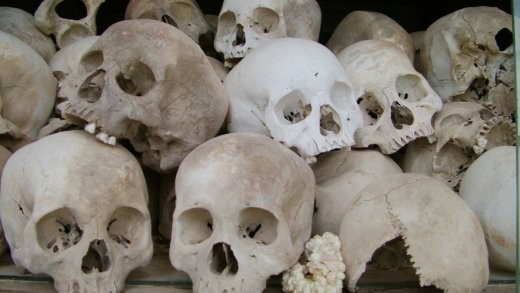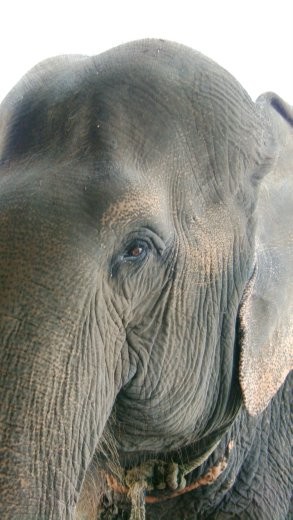Have had an unbelievable time, so many sights and sounds. The Cambodians are really really poor. Hassle you all the time for money and shit. Old women on the streets with there hand out, little kids just wandering around doing the same thing. Blokes with wheelchairs or crutches who have lost there legs to land mines.
Its pretty sad but you cant give something to all, so just every now and then I might give something to them.
I stayed just accross from the boardwalk that runs along side the Tonle Sap river and flows into the Mekong. In the evening the boardwalk is a thrive of activity. The locals like to exercise either playing football, doing dance steps to loud speaker systems or another popular activity is Tot Sey. Played with a shuttlecock that has a few cylindrical plastic layers at the bottom of it they kick it to one another trying not to let it fall to the ground. Most have some pretty cool moves with side and back kicks to keep it in the air.
While in Phnom Pehn I visited the Tuol Sleng Genocide . Prison S21.A moving experience it just goes to show what the Cambodian people had to through during the rule of the Khmer Rouge and Pol Pots regime.
The site is a former high school which was used as the notorious Security Prison 21 by the Khmer Rouge communist regime from its rise to power in 1975 to its fall in 1979. Tuol Sleng means "Hill of the Poisonous Trees" or "Strychnine Hill".
From 1975 to 1979, an estimated 17,000 people were imprisoned at Tuol Sleng (some estimates suggest a number as high as 20,000, although the real number is unknown). At any one time, the prison held between 1,000–1,500 prisoners. They were repeatedly tortured and coerced into naming family members and close associates, who were in turn arrested, tortured and killed. In the early months of S-21's existence, most of the victims were from the previous Lon Nol regime and included soldiers, government officials, as well as academics, doctors, teachers, students, factory workers, monks, engineers, etc. Later, the party leadership's paranoia turned on its own ranks and purges throughout the country saw thousands of party activists and their families brought to Tuol Sleng and murdered.
Those arrested included some of the highest ranking communist politicians such as Khoy Thoun, Vorn Vet and Hu Nim. Although the official reason for their arrest was "espionage", these men may have been viewed by Khmer Rouge leader Pol Pot as potential leaders of a coup against him. Prisoners' families were often brought en masse to be interrogated and later murdered at the Choeung Ek extermination center.
In 1979, the prison was uncovered by the invading Vietnamese army. In 1980, the prison was reopened by the government of the People's Republic of Kampuchea as a historical museum memorializing the actions of the Khmer Rouge regime.
I also visited another reminder of the Khmer Rouge at the 'Killing Fields' where mass graves and a Stupa containg the skulls of many of the victims. Another sad reminder of what this country has been through.

